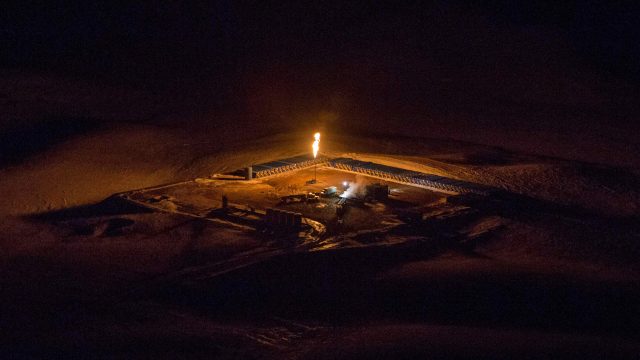North Dakota Sees Lowest Flaring Rate In More Than Two Years

Back in July I wrote that big reductions in the rate of flaring in North Dakota were on the way.
We saw a big spike in flaring over the winter, and that was because the Hess gas processing plant in Tioga went offline for upgrades. Before the upgrades, that plant was processing 100 million cubic feet of gas per day. As you can see on the chart, when it went offline it had a big impact on flaring.
As of May (the last month represented on the chart above) that plant was back to 120 million cubic feet per day, and should be processing 250 million cubic feet per day right now, and could go as high as 300 million cubic feet per day. The impact of that expansion is beginning to show up in the state’s flaring numbers, which lag about two months behind, and we haven’t seen the end of the impacts yet.
“The percentage of gas flared dropped to 26% even though the new Tioga gas plant remained below full capacity due to delayed expansion of gas gathering from south of Lake Sakakawea,” Department of Mineral Resources Director Lynn Helms wrote in his September report. What’s more, the rate of flaring dropped so much that the actual daily volume of gas flared was reduced. “The July capture percentage was 74% which reduced the daily volume of gas flared from June to July 18.6 MMCFD,” writes Helms.
That’s a big deal. Here’s the trend line for the flaring rate. The big spike over the winter was the Hess gas plant expansion. Now it seems the state is back on track for a downward trend in the flaring rate:
Here are the trend lines for the actual volumes of gas captured and flared. As you can see, the amount of gas captured continues a strong upward trend (outside of, again, the winter months with the Hess gas plant was down for upgrades) while the amount of gas flared has begun trending down.
These are positive trends, and they’re very likely to continue. In June Governor Jack Dalrymple announced a new gas plant project by OneOK Partners which promises to process 200 million cubic feet of natural gas per day.
Flaring in North Dakota has become something of a political football, with Democrats touting it as evidence of Republican mishandling of the oil boom and environmental activists using it as justification for slowing down oil production, but it’s clear that the state is on the right path for flaring.






